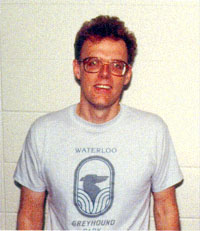Dr. Bill Hibbard
Bill Hibbard, Ph.D. is a scientist at the University of Wisconsin-Madison Space Science and Engineering Center working on visualization and machine intelligence. He is now primarily involved with the SSEC Machine Intelligence Project.
Bill is principal author of the Vis5D, Cave5D, and VisAD open source visualization systems. Vis5D was the first open source 3-D visualization system and is the leading system for animated 3-D visualization of weather simulations. Cave5D is the most widely used software system for scientific visualization in immersive virtual reality. VisAD is the leading visualization system written in Java.
He is also author of the book Super-Intelligent Machines and several articles about the Singularity. His book describes how new technologies of life and mind will develop during the twenty first century and can bring great benefits to humans. He warns that these technologies also threaten to bring radical inequality to human society, and that this threat must be resisted by educating the public about these technologies and building a widespread political movement to protect general human interests. He makes the case that humans will create machines with much greater than human intelligence during the twenty first century. He argues that reinforcement learning is essential to intelligence and that the reinforcement values necessary for this learning are just what we call emotions. He also explains how super-intelligent machines can be a great benefit or a great threat to humans, and says that designing machines with the emotion of love for all humans is the key to getting the benefit and avoiding the threat. He also discusses the prospect of humans themselves becoming super-intelligent.
Bill authored AI is a Threat Despite Calming Voices, What the Wisconsin Demonstrations Can Teach Transhumanists, When Future Watsons Play Politics, Adversarial Sequence Prediction, [Message Contains No Recognizable Symbols] (fiction), Nietzsche’s Overhuman is an Ideal Whereas Posthumans Will be Real, Bias and No Free Lunch in Formal Measures of Intelligence, Temptation, Open Source AI, The Technology of Mind and a New Social Contract, Critique of the SIAI Guidelines on Friendly AI, and My Career at SSEC. Read the full list of his publications!
He earned his Ph.D. in Computer Science at the University of Wisconsin-Madison in 1995 with the thesis Visualizing Scientific Computations: A System Based on Lattice Structured Data and Display Models. He earned his Master’s degree in Computer Science at the University of Wisconsin-Madison in 1974.
